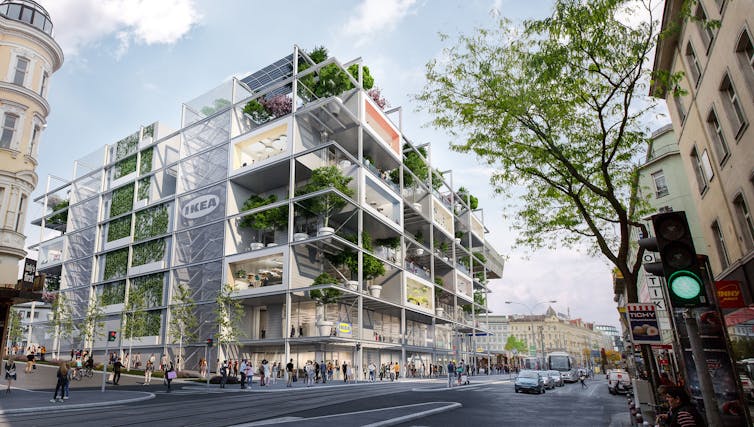Billions are pouring into mobility technology – will the transport revolution live up to the hype?
- Written by Neil G Sipe, Adjunct Researcher in Transport and Planning, The University of Queensland
Over the past decade almost US$200 billion has been invested globally in mobility technology that promises to improve our ability to get around. More than US$33 billion was invested last year alone. Another measure of interest in this area is the number of unicorns, which has doubled in the past two years.
A unicorn is a privately held startup company valued at US$1 billion or more. In early 2018 there were 22 travel and mobility unicorns. By last month the number had grown to 44.
Read more: The battle to be the Amazon (or Netflix) of transport
The top categories in the mobility area are: ride hailing, with 11 unicorns (25.0%); autonomous vehicles, with ten (22.7%); and micromobility, with three (6.8%). The remaining 20 unicorns are in the travel category (hotels, bookings and so on).
Mobility technology is more than just autonomous vehicles, ride hailing and e-scooters and e-bikes. It also includes: electrification (electric vehicles, charging/batteries); fleet management and connectivity (connectivity, data management, cybersecurity, parking, fleet management); auto commerce (car sharing); transportation logistics (freight, last-mile delivery); and urban air mobility.
Promised solutions, emerging problems
Much of the interest in mobility technology is coming from individuals outside the transport arena. Startups are attracting investors by claiming their technology will solve many of our transport problems.
 A Honda employee demonstrates a personal mobility device developed by the car maker.
Franck Robichon/EPA
A Honda employee demonstrates a personal mobility device developed by the car maker.
Franck Robichon/EPA
Micromobility companies believe their e-scooters and e-bikes will solve the “first-mile last-mile” problem by enabling people to move quickly and easily between their homes or workplaces and a bus or rail station. While this might work in theory, it depends on having safe and segregated bicycle networks and frequent and widely accessible public transport services.
Ride-hailing services might relieve people of the need to own a car. But there is evidence to suggest these services are adding to traffic congestion. That’s because, unlike taxis, more of their time on the road involves travelling without any passengers.
Navigation tools (Google Maps, Apple Maps, Waze) have been around longer than most other mobility technologies and are meant make it easier to find the least-congested route for any given trip. However, research suggests these tools might not be working as intended. The backlash against them is growing in some cities because traffic is being directed onto neighbourhood streets rather than arterial roads.
Autonomous vehicles have the goal of reducing injuries and deaths from car crashes. Only a few years ago many bold predictions were being made that these self-driving vehicles would be having positive impacts by now, but this hasn’t happened. The enthusiasm for autonomous vehicles has cooled. Some now believe we won’t see many of the social benefits for decades.
Read more: How we feel about our cars means the road to a driverless future may not be smooth
The final mobility tech area is known as mobility as a service (MAAS). It’s basically a platform designed to make better use of existing infrastructure and transport modes. MAAS begins with a journey planner that is linked to one-stop payment for a range of mobility services – ride-hailing, e-scooters, e-bikes, taxis, public transport, and so on.
MAAS is the newest entrant in the mobility tech field. It has attracted US$6.8 billion to date, but is expected to grow to over US$100 billion by 2030. This idea is creating great enthusiasm, not only among private entrepreneurs, but also in the public sector. It’s too early to know whether it will improve transportation.
Read more: For Mobility as a Service (MaaS) to solve our transport woes, some things need to change
3 trends are driving investment
So, why do venture capitalists continue to show so much interest in mobility technology startups despite poor company performance to date? It appears they believe personal mobility will become increasingly important. Three trends support this belief.
First, urban dwellers increasingly value the ability to move around easily. It’s thought to be a key ingredient for a liveable city. The problem is public transport is often not very good, particularly in the US and in outer suburbs in Australia.
This is due to historically low funding relative to roads. The prospect of more funding and better public transport services in the future is not good. In part that’s because many view public transport as welfare and not an essential public service. Thus, if cities want to become more liveable and competitive, they must look beyond government-funded public transport for other mobility alternatives.
Read more: To bolster our fragile road and rail system we need to add a 'micro-mobility' network
The second trend is declining vehicle ownership. Since 1986 US sales of car and light trucks per capita have dropped by almost 30%. In Australia, new car sales remained relatively constant over the past decade, but a decline since 2017 is expected to continue. These trends are due in part to the cost of owning a vehicle, but also because of a growing view that owning a car may not be necessary.
 Citing ‘radically changed customer and mobility behaviours’, Ikea says its new car-free store in Vienna, Austria, will have no parking.
IKEA/AAP
Citing ‘radically changed customer and mobility behaviours’, Ikea says its new car-free store in Vienna, Austria, will have no parking.
IKEA/AAP
This brings us to the third trend, which involves demographics and the post-millennial desire for access to mobility services rather than vehicle ownership.
Read more: We subscribe to movies and music, why not transport?
These trends, combined with expectations of an upward trend in prices of these services, suggests there may be good times ahead for ride-hailing and micromobility companies. It also means venture capital funding for these startups will not be diminishing in the near future.
The future of transport isn’t simple
Transport systems are multifaceted. No one single app or technology will solve the challenges. And, as we are discovering, some of the purported solutions to problems might actually be making the situation worse.
If the goal is to get people out of their cars (for better health and quality of life and a better environment), this will require more than a technology. Better infrastructure and public policies (including better integration of land uses and transport to reduce the need for transport) will be required – congestion pricing being one of those.
That is not to say technological innovations are not welcome as part of the solution, but they are just that … “part” of the solution.
Authors: Neil G Sipe, Adjunct Researcher in Transport and Planning, The University of Queensland





